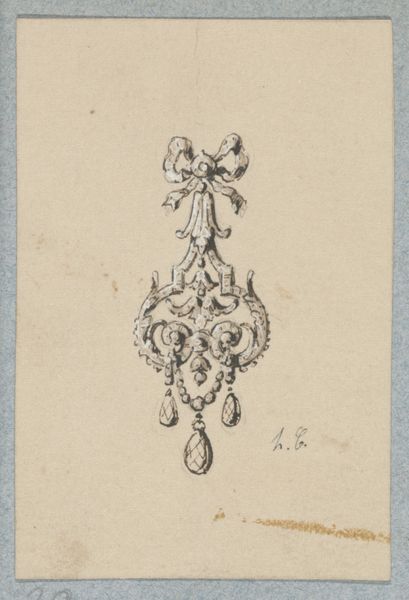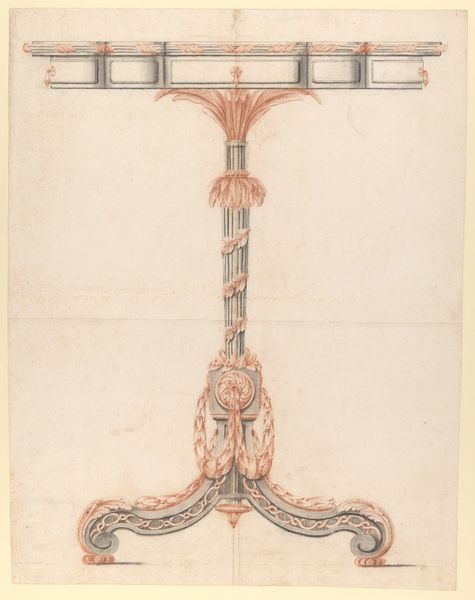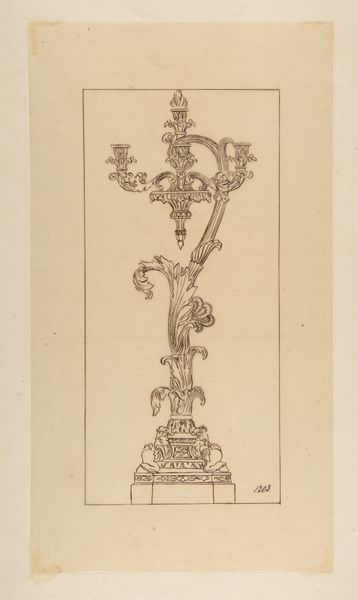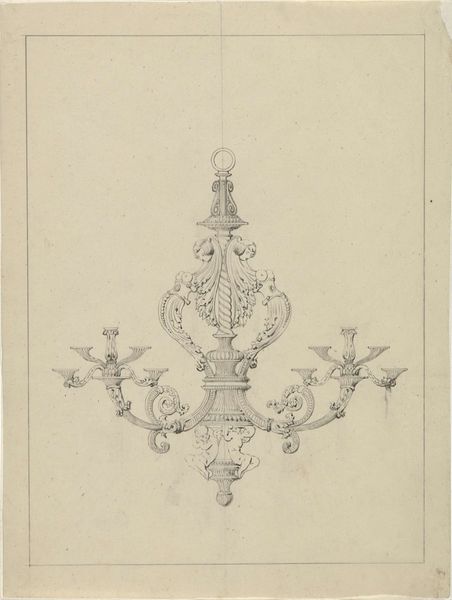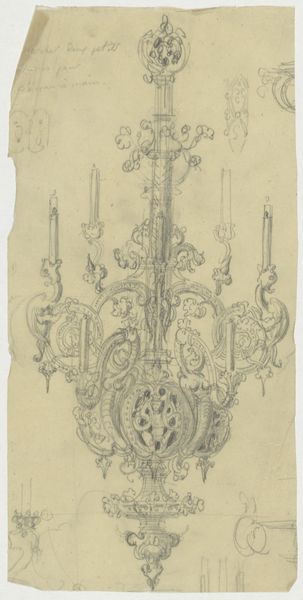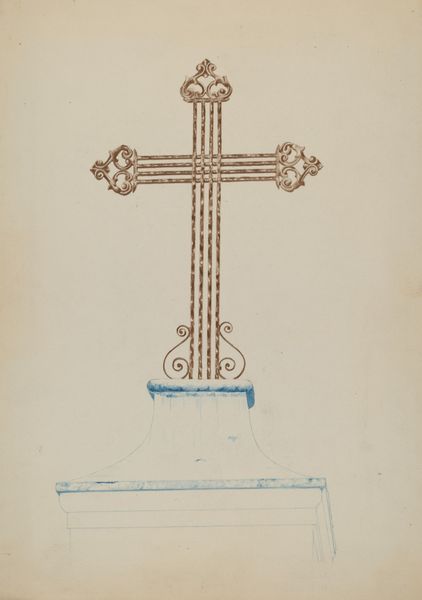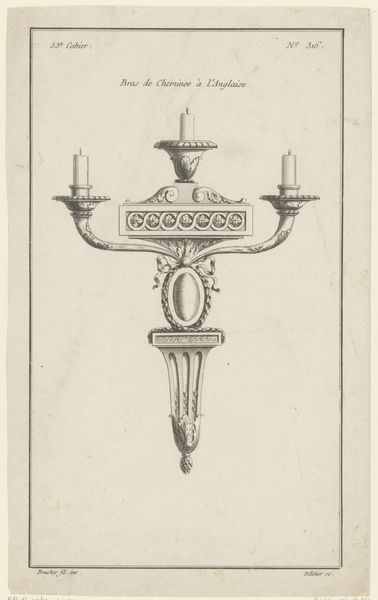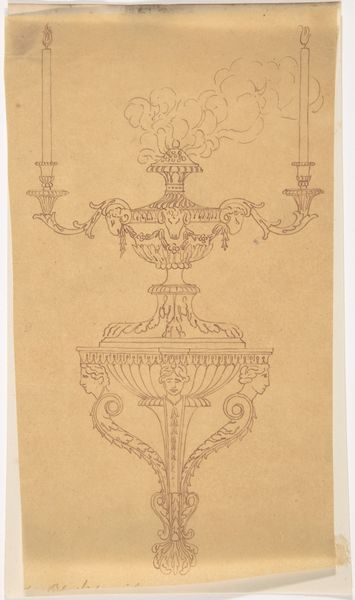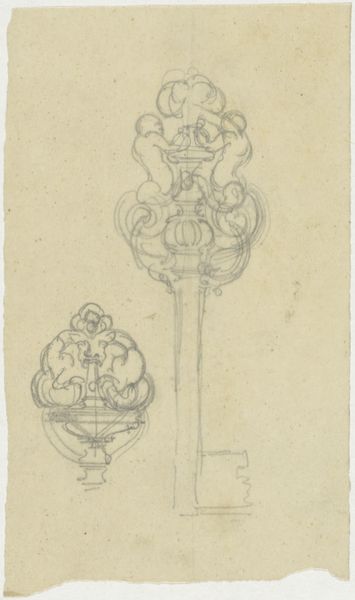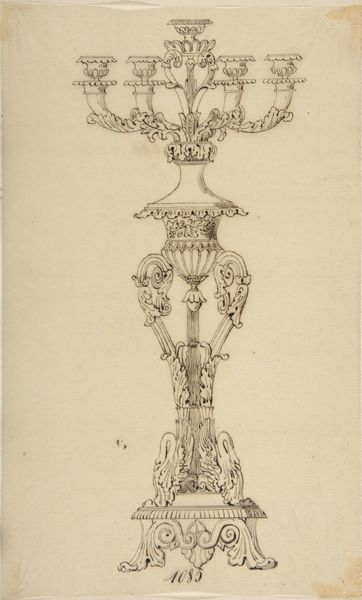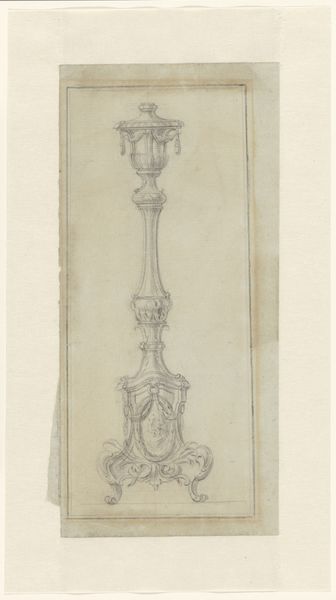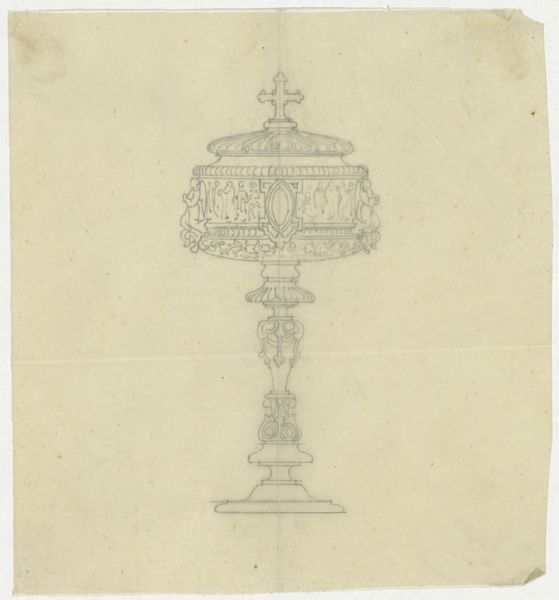
#
aged paper
#
toned paper
#
ink paper printed
#
sketch book
#
personal sketchbook
#
sketchbook drawing
#
watercolour bleed
#
watercolour illustration
#
sketchbook art
#
watercolor
Dimensions: height 140 mm, width 94 mm
Copyright: Rijks Museum: Open Domain
Editor: This is "Two Designs for Pendants with Diamonds," dating from between 1864 and 1894, by Henri Cameré. It’s a delicate watercolor and ink drawing on toned paper and the symmetrical designs create a sense of balance. What is most striking about it from your perspective? Curator: The allure resides in the interplay of line and form. Note how the artist has masterfully employed delicate linework to define the intricate shapes, achieving a remarkable sense of depth and volume, despite the two-dimensionality of the medium. Do you observe how the negative space around the crosses contributes to their visual prominence? Editor: Yes, it almost feels like the crosses are floating on the page, brought forward by the toned paper background. The ornate detailing within each pendant is also really compelling. Curator: Precisely. Consider the concentric circles and the floral motifs; these aren't merely decorative elements. Each contributes to a complex visual rhythm, inviting the viewer to meticulously examine every detail. It prompts reflection on the meticulous skill involved in their creation, don't you think? Editor: It does, absolutely. It makes me consider the labor and precision required to draft such refined drawings by hand, even before their potential realization in precious materials. Curator: Exactly. It’s in this interplay of form, line, and implied volume that the aesthetic value is created. We find not just a design, but a complex system of visual cues awaiting decoding. Editor: I see now how analyzing the formal elements can unlock a deeper appreciation for this design. Thanks! Curator: My pleasure. This exercise in seeing truly enriches our understanding.
Comments
rijksmuseum about 2 years ago
⋮
In 1867 rich diamond deposits were discovered along the Orange River in South Africa. Diamonds subsequently flooded the European market. Their price went down, and they became more widely available and affordable than in previous centuries. Notice the three drop-shaped diamonds hanging from the pendant in the top drawing; this type of cut is called briolette. The cruciform pendant is set with brilliant-cut diamonds.
Join the conversation
Join millions of artists and users on Artera today and experience the ultimate creative platform.
